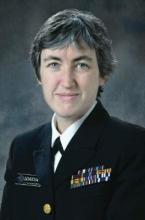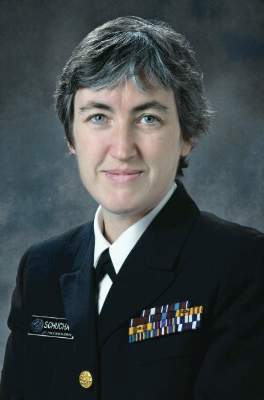User login
The Centers for Disease Control and Prevention is urging pediatricians treating children with attention-deficit/hyperactivity disorder (ADHD) to recommend behavior therapy before prescribing any ADHD-specific medications.
In its latest Vital Signs report, the CDC highlights the importance of having parents of children with ADHD – specifically, children between the ages of 2 and 5 years – develop critical communication, reinforcement, and disciplinary skills to improve the children’s behavior without the use of any additional medication.
“Behavior therapy has been shown to improve symptoms of children with ADHD and can be as effective as medicine, but without the side effects,” CDC Principal Deputy Director Anne Schuchat explained during a teleconference on May 3.
Behavior therapy involves parents of children with ADHD attending a series of therapist-led sessions designed to teach strategies that will “encourage positive behavior, discourage negative behaviors, improve communication, and strengthen their relationship with their child,” according to the CDC. The number of sessions is typically eight, although that number often can run higher.
“This kind of therapy … strengthens the relationship between the parent and child, and it gives parents more effective tools to help their child learn positive behaviors,” said Dr. Georgina Peacock, director of the division of human development and disability at the CDC’s National Center on Birth Defects and Developmental Disabilities.
There are three key takeaways from behavior therapy: positive communication, or giving children your full attention and using the same words with them that they use with you to show that you’re listening; positive reinforcement, or praising your child when he or she does something well to incentivize similar behavior in the future; and structure, or setting up daily routines so that children know what to expect and everyday life becomes predictable for them. Parents who have undergone behavior therapy have reported that their children perform better in school, behave better at home, and improve interpersonal relationships, according to Dr. Peacock.
“Sometimes a therapist works directly with a parent and child; other times, the therapist meets with just the parents,” she clarified. “Parents will go home and practice techniques, and then go back to the therapist to talk about what worked and what didn’t, and what new skills to practice again.”
According to the CDC, only 15% of young children with ADHD are receiving only psychological services, compared with an overwhelming 49% who are receiving only medication and 27% who are receiving medication and psychological services. Nine percent of children aged 2-5 years with ADHD are not receiving either form of care.
Data from 2011 and 2012 show that 6.4 million U.S. children aged 4-17 years have ADHD, with about 2 million of them diagnosed before the age of 6 years. Childhood ADHD has been linked to higher rates of emergency department visits, unintentional injuries, high school dropouts, and grade level retention.
““The bottom line is that we know parents want to do what’s best for their children, and we want to help,” said Dr. Schuchat, adding that “we know that medicine can be appropriate for some young children, but we encourage pediatricians, therapists, and other health care providers to work with families to make sure that children with ADHD are receiving the most appropriate treatment.”
The Centers for Disease Control and Prevention is urging pediatricians treating children with attention-deficit/hyperactivity disorder (ADHD) to recommend behavior therapy before prescribing any ADHD-specific medications.
In its latest Vital Signs report, the CDC highlights the importance of having parents of children with ADHD – specifically, children between the ages of 2 and 5 years – develop critical communication, reinforcement, and disciplinary skills to improve the children’s behavior without the use of any additional medication.
“Behavior therapy has been shown to improve symptoms of children with ADHD and can be as effective as medicine, but without the side effects,” CDC Principal Deputy Director Anne Schuchat explained during a teleconference on May 3.
Behavior therapy involves parents of children with ADHD attending a series of therapist-led sessions designed to teach strategies that will “encourage positive behavior, discourage negative behaviors, improve communication, and strengthen their relationship with their child,” according to the CDC. The number of sessions is typically eight, although that number often can run higher.
“This kind of therapy … strengthens the relationship between the parent and child, and it gives parents more effective tools to help their child learn positive behaviors,” said Dr. Georgina Peacock, director of the division of human development and disability at the CDC’s National Center on Birth Defects and Developmental Disabilities.
There are three key takeaways from behavior therapy: positive communication, or giving children your full attention and using the same words with them that they use with you to show that you’re listening; positive reinforcement, or praising your child when he or she does something well to incentivize similar behavior in the future; and structure, or setting up daily routines so that children know what to expect and everyday life becomes predictable for them. Parents who have undergone behavior therapy have reported that their children perform better in school, behave better at home, and improve interpersonal relationships, according to Dr. Peacock.
“Sometimes a therapist works directly with a parent and child; other times, the therapist meets with just the parents,” she clarified. “Parents will go home and practice techniques, and then go back to the therapist to talk about what worked and what didn’t, and what new skills to practice again.”
According to the CDC, only 15% of young children with ADHD are receiving only psychological services, compared with an overwhelming 49% who are receiving only medication and 27% who are receiving medication and psychological services. Nine percent of children aged 2-5 years with ADHD are not receiving either form of care.
Data from 2011 and 2012 show that 6.4 million U.S. children aged 4-17 years have ADHD, with about 2 million of them diagnosed before the age of 6 years. Childhood ADHD has been linked to higher rates of emergency department visits, unintentional injuries, high school dropouts, and grade level retention.
““The bottom line is that we know parents want to do what’s best for their children, and we want to help,” said Dr. Schuchat, adding that “we know that medicine can be appropriate for some young children, but we encourage pediatricians, therapists, and other health care providers to work with families to make sure that children with ADHD are receiving the most appropriate treatment.”
The Centers for Disease Control and Prevention is urging pediatricians treating children with attention-deficit/hyperactivity disorder (ADHD) to recommend behavior therapy before prescribing any ADHD-specific medications.
In its latest Vital Signs report, the CDC highlights the importance of having parents of children with ADHD – specifically, children between the ages of 2 and 5 years – develop critical communication, reinforcement, and disciplinary skills to improve the children’s behavior without the use of any additional medication.
“Behavior therapy has been shown to improve symptoms of children with ADHD and can be as effective as medicine, but without the side effects,” CDC Principal Deputy Director Anne Schuchat explained during a teleconference on May 3.
Behavior therapy involves parents of children with ADHD attending a series of therapist-led sessions designed to teach strategies that will “encourage positive behavior, discourage negative behaviors, improve communication, and strengthen their relationship with their child,” according to the CDC. The number of sessions is typically eight, although that number often can run higher.
“This kind of therapy … strengthens the relationship between the parent and child, and it gives parents more effective tools to help their child learn positive behaviors,” said Dr. Georgina Peacock, director of the division of human development and disability at the CDC’s National Center on Birth Defects and Developmental Disabilities.
There are three key takeaways from behavior therapy: positive communication, or giving children your full attention and using the same words with them that they use with you to show that you’re listening; positive reinforcement, or praising your child when he or she does something well to incentivize similar behavior in the future; and structure, or setting up daily routines so that children know what to expect and everyday life becomes predictable for them. Parents who have undergone behavior therapy have reported that their children perform better in school, behave better at home, and improve interpersonal relationships, according to Dr. Peacock.
“Sometimes a therapist works directly with a parent and child; other times, the therapist meets with just the parents,” she clarified. “Parents will go home and practice techniques, and then go back to the therapist to talk about what worked and what didn’t, and what new skills to practice again.”
According to the CDC, only 15% of young children with ADHD are receiving only psychological services, compared with an overwhelming 49% who are receiving only medication and 27% who are receiving medication and psychological services. Nine percent of children aged 2-5 years with ADHD are not receiving either form of care.
Data from 2011 and 2012 show that 6.4 million U.S. children aged 4-17 years have ADHD, with about 2 million of them diagnosed before the age of 6 years. Childhood ADHD has been linked to higher rates of emergency department visits, unintentional injuries, high school dropouts, and grade level retention.
““The bottom line is that we know parents want to do what’s best for their children, and we want to help,” said Dr. Schuchat, adding that “we know that medicine can be appropriate for some young children, but we encourage pediatricians, therapists, and other health care providers to work with families to make sure that children with ADHD are receiving the most appropriate treatment.”
FROM A CDC TELECONFERENCE

